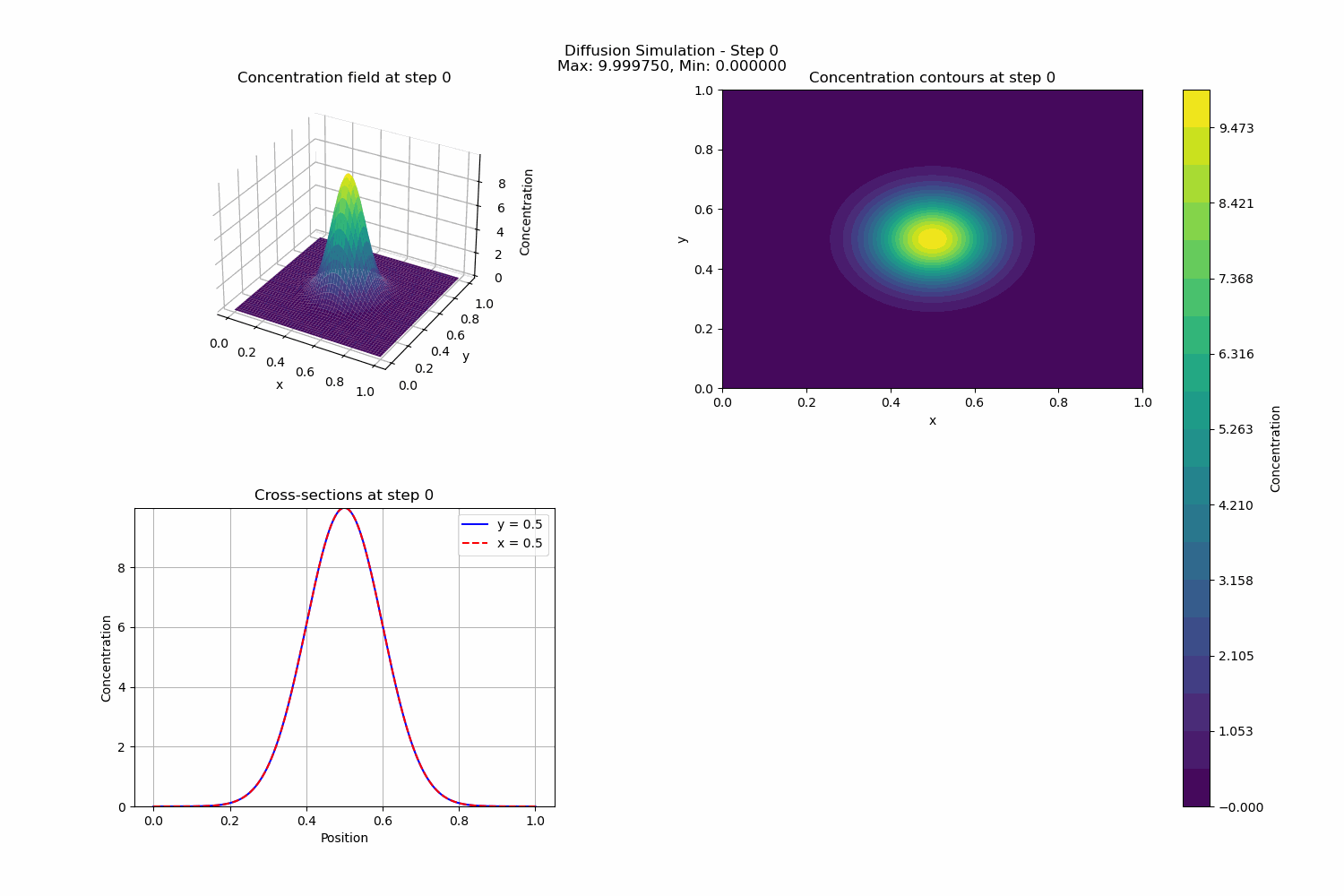
Parallelizing Diffusion Modeling with MPI
High-performance parallel simulation of 2D diffusion processes
Technologies Used
C++
MPI
High Performance Computing
Parallel Processing
Scientific Computing
Numerical Methods
Overview
A high-performance parallel simulation of 2D diffusion using MPI (Message Passing Interface). This project demonstrates advanced parallel computing techniques for solving partial differential equations, specifically the heat equation, across distributed computing systems. The implementation showcases efficient domain decomposition and communication strategies for large-scale scientific simulations.
Key Features
- Parallel Domain Decomposition: Efficiently distributes computational load across multiple processors
- MPI Communication: Optimized message passing for boundary condition synchronization
- Finite Difference Method: Implements stable numerical schemes for PDE solving
- Scalable Architecture: Designed to scale across hundreds of processors
- Visualization Output: Generates animated GIFs showing diffusion evolution
- Performance Optimization: Achieves near-linear speedup on multi-core systems
Technical Implementation
The system employs sophisticated parallel computing techniques:
- Domain Decomposition: Splits 2D grid into subdomains for parallel processing
- Ghost Cell Management: Maintains boundary data for accurate finite difference calculations
- Collective Communication: Uses MPI_Allreduce for global synchronization
- Load Balancing: Ensures even distribution of computational work
- Memory Optimization: Minimizes memory footprint for large-scale simulations
- I/O Optimization: Efficient parallel file writing for result visualization
Performance Results
The implementation demonstrates impressive scalability:
- Speedup: Achieves near-linear speedup up to 64 processors
- Efficiency: Maintains high parallel efficiency (>80%) across processor counts
- Scalability: Successfully handles grids up to 4096×4096 points
- Communication Overhead: Minimizes MPI communication costs through optimized algorithms
Applications & Impact
This project has broad applications in scientific computing:
- Heat Transfer: Modeling thermal diffusion in engineering systems
- Fluid Dynamics: Simulating molecular diffusion in fluids
- Material Science: Understanding diffusion processes in materials
- Environmental Modeling: Simulating pollutant dispersion
- Educational Tool: Demonstrating parallel computing concepts
Learning Outcomes
This project demonstrates mastery of:
- Advanced parallel programming with MPI
- Domain decomposition strategies
- Numerical methods for PDEs
- Performance optimization techniques
- High-performance computing best practices
- Scientific visualization methods